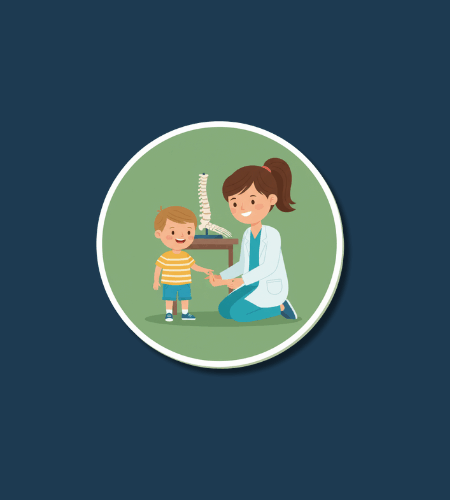World Pediatric Bone & Joint Day is observed every year on October 19. It is a day dedicated to raising awareness about musculoskeletal disorders in children and adolescents—conditions that affect bones, joints, muscles, and connective tissues—and encouraging prevention, early diagnosis, and effective treatment.
History of World Pediatric Bone & Joint Day
The observance was inaugurated in 2012 by the Pediatric Specialty Group of the U.S. Bone & Joint Initiative (USBJI). It is held as part of Bone and Joint Action Week, which draws attention across the lifespan to musculoskeletal health. 1
Over time, the day has been used by hospitals, orthopedic clinics, research organizations, schools, and health advocates to highlight the unique challenges children face in bone and joint health—emphasizing that pediatric musculoskeletal conditions require different approaches than adult cases.
Why World Pediatric Bone & Joint Day is important
Children and adolescents are in a phase of growth and development, so their bones and joints are structurally different (e.g. growth plates, more flexible connective tissues). Conditions or injuries that might seem minor when untreated can lead to long-term problems—pain, deformity, limited mobility, or disability. Thus, awareness and early intervention are vital.
Moreover, musculoskeletal conditions in young people are underrecognized, often mistaken for “growing pains” or ignored until they worsen. By spotlighting this area of health, this day helps educate parents, caregivers, teachers, and health professionals to watch for warning signs and ensure proper referral and care. It also supports advocacy for research, resources, and policies that ensure children have access to specialized care.
- It brings attention to bone and joint health in children
- It promotes early diagnosis and intervention
- It teaches about prevention and healthy habits (nutrition, activity)
- It supports research, resources, and equity in musculoskeletal health for youth
- It encourages medical professionals to prioritize pediatric care.
How to Observe World Pediatric Bone & Joint Day
One practical way is to organize or attend an awareness event: clinics might offer free screenings, talks, or Q&A sessions with pediatric orthopedic specialists. Schools or youth centers can host educational workshops or poster displays about bone growth, injury prevention, posture, and healthy activity.
You can also use digital platforms: share infographics, fact sheets, or personal stories about children who overcame musculoskeletal conditions or challenges. Encourage parents and teachers to monitor children’s movements, complaints of joint pain, limping, or repeat injuries, and to seek evaluation when something seems off. If you are in health, education, or community leadership, partner with orthopedic or pediatric associations to run themed campaigns.
- Share educational content (infographics, facts, signs) online
- Host or attend talks or screening clinics
- Teach children safe movement, posture, stretching, and strength habits
- Support or fund pediatric musculoskeletal research or charities
- Encourage early evaluation when children complain of joint or bone pain.
World Pediatric Bone & Joint Day Dates Table
| Year | Date | Day |
|---|---|---|
| 2025 | October 19 | Sunday |
| 2026 | October 19 | Monday |
| 2027 | October 19 | Tuesday |
| 2028 | October 19 | Thursday |
| 2029 | October 19 | Friday |
Subscribe to our newsletter and never miss a holiday again!

